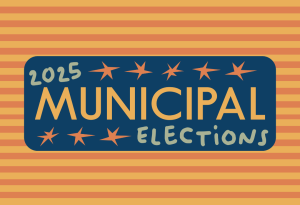Analysis: Here’s what happening in the North Carolina Election
November 4, 2020
Millions of people in the United States exercised their Constitutional right and cast their ballots for local, state and federal officials Tuesday.
As of Wednesday evening, there are still questions as to who will be the next president and when results will be finalized in North Carolina. Here’s what’s happening.
Turnout and results
Nearly 5.5 million people cast their ballots in the 2020 election in North Carolina. Of those, 4.5 million were cast during early voting or via absentee ballot, which is why Democratic presidential candidate Joe Biden led early in the night.
Democrats outpaced Republicans by about 300,000 votes during early voting. North Carolina is allowed to tabulate all early voting and absentee ballots before election night. After polls closed, the North Carolina State Board reported those numbers.
Soon after, votes cast on Election Day were also reported, which narrowed the gap and eventually put President Donald Trump in the lead. The indication — based on that narrowing of Biden’s lead — is that Republicans turned out on Election Day slightly more than Democrats.
But while 100% of the precincts are reporting, results could still change — especially for the races that have small margins between candidates.
About 117,000 absentee ballots remain unaccounted in North Carolina as of Wednesday evening according to the state board, but that does not account for voters who decided to vote on Election Day instead.
Karen Brinson Bell, the executive director of NCSBE, said the county board of elections have until Nov. 12 to count any remaining eligible ballots that arrive at the county board office.
“North Carolina stopped counting votes on election night because there were no more votes to count at that time,” Bell said during a news conference Wednesday. “There are also no more ballots that can be cast for election. All eligible ballots have already left the voters hands.”
Bell said that the state’s numbers would likely not change except for “very few exceptions” before that Nov. 13 canvass.
Absentee ballots postmarked on or before Nov. 3 by 5 p.m. will be counted as long as they get to the county boards of election by 5 p.m. Nov. 12.
On Nov. 13, the Watauga County Board of Elections will hold its canvass meeting to account for every valid ballot and ensure those are counted.
Provisional ballots are also counted during that time. In 2016, Bell said the state had about 61,000 provisional ballots and of those, 27,000 were counted. With Election Day turnout lower than years past — only about 1 million on Tuesday compared to over 1.5 million in 2016 — there are likely less provisional ballots.
President
So what does that mean for North Carolina? Well for president, it doesn’t mean a whole lot.
If every single one of the 117,000 ballots the state board currently has listed is counted, Biden would have to receive the overwhelming majority of votes to overtake Trump’s lead. Biden is down by 76,701 votes
While Democrats tend to vote more via absentee ballots than Republicans, that’s still an immense number to make up considering Trump would also pick up absentee votes. In Pennsylvania, Democrats out-voted Republicans by mail in a 3-1 margin, according to Politico.
Senate
Even for the Senate race in North Carolina those absentee and provisional ballots won’t make much of a difference as the difference between the two candidates is too great. Incumbent Sen. Thom Tillis is up by about 96,000 votes over Democratic challenger Cal Cunningham.
Like Biden, Cunningham would have to win well over 82% of those absentee votes to surpass Tillis.
Governor and Lieutenant Governor
Both the North Carolina governor and lieutenant governor races were called on election night. Simply put, the outstanding ballots would not make a difference even if all the ballots went for the trailing candidate.
Democratic incumbent Gov. Roy Cooper is leading current Republican Lt. Gov. Dan Forest by over 250,000 votes. If Dan Forest was able to win all 117,000 outstanding absentee ballots, he would still be about 140,000 votes shy of beating Cooper.
A similar situation is occurring in the Lt. Governor’s race. Mark Robinson is leading by about 175,000 votes, which leads no path for his challenger to win.
The only chance for the trailing candidate in these races would be if there is an incredibly high number of provisional ballots which is unlikely as 2016 saw more Election Day voters and only 61,000 provisional ballots.
Attorney general
For close races though, those absentee ballots will be huge.
The race for North Carolina Attorney General is separated by about 10,000 votes. The race for the chief justice of the North Carolina Supreme Court is separated by an even smaller margin at about 3,700 votes.
So across the state, the races that are separated by less than 50,000 votes could really see some changes as absentee and provisional ballots get counted. But for president, it’s most likely Trump will keep his lead.
The state board will meet on Nov. 24 to certify the election.














Laura Middlesteadt • Nov 9, 2020 at 9:57 am
Hi Moss, what about the results from the local races such as county commissioner and NC State House? Local judges? Ag commissioner, etc?
Thanks!